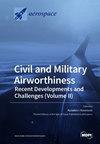Workload Measurement Method for Manned Vehicles in Multitasking Environments
IF 2.1
3区 工程技术
Q2 ENGINEERING, AEROSPACE
引用次数: 0
Abstract
Workload (WL) measurement is a crucial foundation for human–machine collaboration, particularly in high-stress multitasking environments such as manned vehicle operations during emergencies, where operators often experience High Workload (HWL) levels, increasing the risk of human error. To address this challenge, this study introduces a novel WL measurement method that combines Task Demand Load (TDL) and Subject Load Capacity (SLC) to quantitatively assess operator workload. This method was validated through experiments with 45 subjects using the Environmental Control and Atmospheric Regeneration (ECAR) system. The statistical results showed that as the designed WL levels increased, the Average Workload (AWL), the NASA-TLX score, and the work time percentage increased significantly, while the task accuracy and the fixation duration decreased significantly. These results also revealed the impact of WL levels on human responses (such as subjective feeling, work performance, and eye movement). In addition, very strong correlations were found between AWL measurements and NASA-TLX scores (r = 0.75, p < 0.01), task accuracy (r = −0.73, p < 0.01), and work time percentage (r = 0.97, p < 0.01). Overall, these results proved the effectiveness of the proposed method for measuring WL. On this basis, this study defined WL thresholds by integrating task accuracy with AWL calculations, providing a framework for the dynamic management of task allocation between humans and machines to maintain operators within optimal WL ranges.多任务环境下载人飞行器的工作量测量方法
工作量(WL)测量是人机协作的重要基础,尤其是在高压力多任务环境中,如紧急情况下的载人车辆操作,操作员通常会经历高工作量(HWL)水平,从而增加人为错误的风险。为了应对这一挑战,本研究引入了一种新颖的 WL 测量方法,该方法结合了任务需求负荷 (TDL) 和主体负荷能力 (SLC) 来定量评估操作员的工作量。通过使用环境控制和大气再生(ECAR)系统对 45 名受试者进行实验,对该方法进行了验证。统计结果表明,随着设计 WL 水平的增加,平均工作量(AWL)、NASA-TLX 分数和工作时间百分比显著增加,而任务准确性和固定持续时间显著减少。这些结果还揭示了 WL 水平对人类反应(如主观感觉、工作表现和眼球运动)的影响。此外,还发现 AWL 测量值与 NASA-TLX 分数(r = 0.75,p < 0.01)、任务准确性(r = -0.73,p < 0.01)和工作时间百分比(r = 0.97,p < 0.01)之间存在很强的相关性。总之,这些结果证明了所建议的 WL 测量方法的有效性。在此基础上,本研究通过将任务准确性与平均工作时间计算相结合,确定了平均工作时间阈值,为人机之间任务分配的动态管理提供了一个框架,从而使操作员的平均工作时间保持在最佳范围内。
本文章由计算机程序翻译,如有差异,请以英文原文为准。
求助全文
约1分钟内获得全文
求助全文
来源期刊

Aerospace
ENGINEERING, AEROSPACE-
CiteScore
3.40
自引率
23.10%
发文量
661
审稿时长
6 weeks
期刊介绍:
Aerospace is a multidisciplinary science inviting submissions on, but not limited to, the following subject areas: aerodynamics computational fluid dynamics fluid-structure interaction flight mechanics plasmas research instrumentation test facilities environment material science structural analysis thermophysics and heat transfer thermal-structure interaction aeroacoustics optics electromagnetism and radar propulsion power generation and conversion fuels and propellants combustion multidisciplinary design optimization software engineering data analysis signal and image processing artificial intelligence aerospace vehicles'' operation, control and maintenance risk and reliability human factors human-automation interaction airline operations and management air traffic management airport design meteorology space exploration multi-physics interaction.
 求助内容:
求助内容: 应助结果提醒方式:
应助结果提醒方式:


